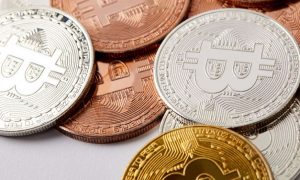In the last ten years or so, a new asset class has swept the globe—digital assets and cryptocurrency. It began with Bitcoin in 2009 and has since expanded into thousands of different cryptocurrencies.
Bitcoin, the first and largest cryptocurrency by market cap, is widely considered the gold standard of the asset class. Over time, other coins have seen their values plunge to zero, and it’s likely that many others will follow.
Only cryptocurrencies with large market capitalizations and a historical track record of success can be considered potential investments. Most digital assets are purely speculative in nature. Here’s what potential investors need to know about digital assets and cryptocurrency.
What is a Digital Asset?
Broadly speaking, most digital assets fall into two general categories:
- cryptocurrencies (money)
- cryptographic tokens
The two are often called “coins” and “tokens,” respectively, for short.
What are Cryptocurrencies?
There are many different types of cryptocurrency beyond Bitcoin. These include:
- Bitcoin Cash
- Litecoin
- Ethereum
- Ripple
- Stellar
- NEO
- Cardano
- IOTA
In 2011, Charlie Lee created a “hard fork” of the Bitcoin (BTC) network, meaning a new and different blockchain was created based on the old one. Lee called this new coin Litecoin (LTC). LTC uses a different consensus algorithm than BTC, generally allowing for faster transactions with lower fees. But because the Litecoin network is much smaller, it’s also less secure.
Over the years, many other digital assets and cryptocurrencies have been created. Some have been forks from the Bitcoin code. Many have been born of new projects entirely. Like Litecoin, many of these other cryptocurrencies share similar properties with Bitcoin but have much smaller networks and market caps.
What are Cryptographic Tokens?
Tokens are digital assets that can serve a variety of purposes. One of the most common types of tokens is known as a “utility token,” which is a token that serves a specific function within a digital ecosystem.
An example of a utility token would be the Basic Attention Token (BAT). BAT is the native token of the Brave browser, which seeks to protect users’ privacy with a new advertising model.
This model blocks all ads by default and allows users to opt into which ads they would like to see. When a user chooses to view an ad, they are rewarded with a small amount of BAT. In this way, advertisers can reach their target audience while users can maintain personal privacy.
Ether (ETH), the token of the Ethereum smart contract network, is the second-largest cryptocurrency by market cap. ETH is used as fuel (aka Gas) for decentralized applications—applications that run based on smart contracts that execute automatically when certain conditions are fulfilled.
There are even digital assets for social networks that reward users in the form of crypto when they create and curate quality content, like Steemit does with the STEEM token. Many new use cases are being developed all the time, and the list could go on practically forever.
History of Digital Assets and Cryptocurrency
The Bitcoin white paper, also known as the Satoshi Nakamoto white paper, was published on October 31st, 2008. Just over two months later, on January 3rd, 2009, the Bitcoin network went live, and a new asset class (cryptocurrency) was born alongside a new technology (blockchain).
Bitcoin is a scarce form of digital money that can be transferred peer-to-peer, without any financial intermediary. It uses the proof-of-work (PoW) consensus algorithm and has a fixed supply limit, so it can’t be created out of thin air.
Benefits of Investing in Digital Assets
The benefits of investing in digital assets go beyond the potential for outsized capital gains.The biggest benefits of investing in digital assets are:
- Individual sovereignty and less counterparty risk
- Portfolio diversification
- Hedge against inflation
There are some people within the community who want to buy cryptocurrency because of the ways it aids individual freedom and sovereignty more than for its potential for prosperity. There are others who value this investment as a unique form of diversification and a hedge against inflation.
Individual Sovereignty
Bitcoin allows people to become their own bank. When storing assets at a traditional bank or other financial institution, an individual becomes vulnerable to the risk of that institution going bankrupt or mismanaging their funds. This risk is known as counterparty risk.
Because they are peer-to-peer, digital assets and cryptocurrency eliminate all counterparty risk.
By holding their own private keys, investors can have total ownership of their digital assets and cryptocurrency. Other than gold or silver, no other asset has this quality.
Diversification
Bitcoin has been the best performing asset class of the last decade by far. During eight of those years, the returns from holding Bitcoin exceeded that of any other asset in the world. At the time of this writing, the same holds true for 2020. (That said, as with any investment past performance is not an indication of future performance.)
Cryptocurrency can diversify an investment portfolio in a way no other asset class can. Crypto is known as a “non-correlated asset,” meaning it tends to have little or no correlation to the rest of the investment world (although this has changed at times during 2020).
Inflation Hedge
While all investing carries risk, investors often fail to factor in the one risk inherent in every investment denominated in fiat currency (stocks, bonds, mutual funds, ETFs, etc.): Inflation risk.
The law of supply and demand dictates that when the supply of something increases, its price will decrease absent an equal or greater increase in demand.
With central banks creating tens of trillions of new currency units in 2020 alone, more and more investors have begun looking toward digital assets and cryptocurrencies that have fixed supply limits, like Bitcoin.
It should be noted that the only cryptocurrencies that can serve as viable inflation hedges are those that have a fixed supply limit. Like gold, scarce commodities tend to increase in value during times of inflation.
In addition, global uncertainty and turmoil tend to increase demand for safe haven assets.
And amidst the chaos of 2020, Bitcoin is the best performing asset in the world, being up 80% year-to-date at the time of writing. (Despite this success, past performance is not an indication of future performance.)
Digital Assets and Risk
The vast majority of altcoins are highly speculative in nature. Most have very small market capitalizations of less than $1 billion or even less than $100 million, so their prices can swing dramatically in short periods of time due to a lack of liquidity. And in the long run, it’s not unheard of for altcoins to drop to zero, meaning investors lose everything.
Bitcoin might be a little different because it has the most secure network (due to having the highest hashrate), the longest track record, and the largest market cap by far.
Best Practices for Investing in Digital Assets and Cryptocurrency
Anyone considering investing in digital assets and cryptocurrency would do well to educate themselves on related subjects.
The Satoshi Nakamoto white paper might be a good starting point. The Bitcoin FAQ on Bitcoin.org also answers a lot of questions and addresses common misconceptions about Bitcoin and cryptocurrency.
The more a potential investor familiarizes themselves with crypto terms like bitcoin halving, bitcoin forks, cryptocurrency wallet and crypto exchange, the less confusing this type of investment will seem.
Due to the volatile nature of digital assets and cryptocurrency, a common strategy is what’s known as dollar-cost averaging. Rather than trying to time the markets, investors sometimes buy fixed dollar amounts at fixed time intervals.
An example would be an investor setting a recurring buy for an automatic purchase of $50 worth of Bitcoin every two weeks.
The Takeaway
There’s a lot to learn when it comes to digital assets and cryptocurrency. This relatively new asset class has a lot going for it—from individual sovereignty to a hedge against inflation—but it can feel very much like the wild west to new investors.
The post Digital assets and cryptocurrency appeared first on Mediafeed.org
Original source: Mediafeed.org






